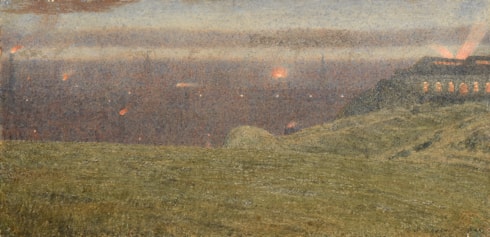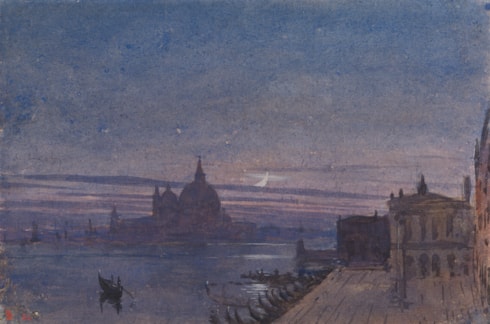
George Price BOYCE
London 1826 - London 1897
Biography
George Price Boyce was trained, and began his career, as an architect. Following a meeting with David Cox at Betws-y-Coed in Wales in 1849, however, he decided to take up landscape painting. He received lessons from Cox, whose influence can be seen in Boyce’s early watercolours. Not long afterwards he met Dante Gabriel Rossetti, who was to become an intimate and lifelong friend, and, a few years later, William Holman Hunt and John Everett Millais. These three young artists, who formed the nucleus of the Pre-Raphaelite Brotherhood, founded in 1848, discovered a kindred spirit in Boyce. Of independent means, he began avidly collecting their work (eventually owning more than forty works by Rossetti), while writing about them in his diaries between 1851 and 1875, which serve as an important record of the Brotherhood’s activities.
Boyce only rarely painted landscapes in oil, and most of his work is in watercolour. His landscapes, usually of views in the Thames valley, were exhibited at the Royal Academy from 1853 onwards, and frequently at the Old Water-Colour Society, of which he became an Associate in 1864 and a full member in 1877. Having once considered a career as an architect Boyce was passionately interested in old buildings and produced a large number of precise watercolour views of rural architecture; of farms, mills and manor houses. On the advice of John Ruskin, he made trips to Venice and Verona in 1854 and Switzerland in 1856; he also spent a few months in Egypt between 1861 and 1862. On his return from Egypt he began using Rossetti’s old studio in Blackfriars, on the Thames, and there became friendly with James McNeill Whistler. In 1869 he had a house built for him in Chelsea by the architect Phillip Webb, where he lived until his death in 1897.
As Virginia Surtees has written of Boyce, ‘From his own water-colours he expected little, his innate modesty debarring any confidence of success...The touchstone of his whole working life was the desired excellence of execution. His subjects were mostly architectural, usually seen in the context of a peaceful English countryside, perhaps at sunrise or in the blaze of midday when the successful contrast of shadow to the full exposure of the summer heat, or that of red brick to a harvested cornfield, were all that he aspired to...Faithful to a vision of simplicity and goodness he interpreted these with a serenity and unpretentious charm which were the reflection of his own character.’ Christopher Newall has added that ‘[Boyce’s] works, although small in scale and most intimate in their means of expression, are sincere and delicately beautiful.’




